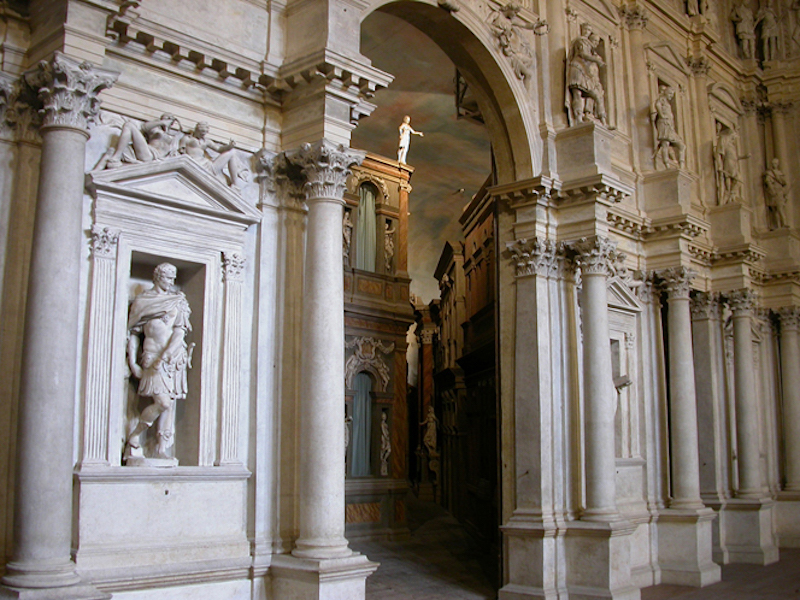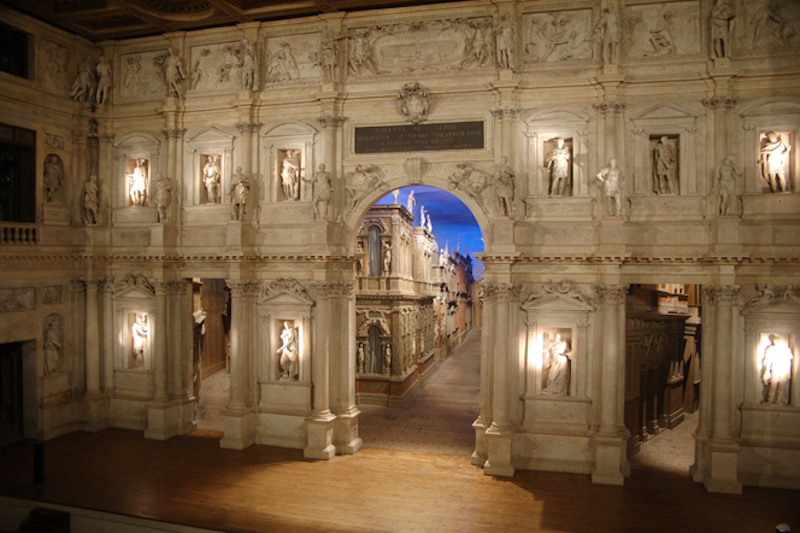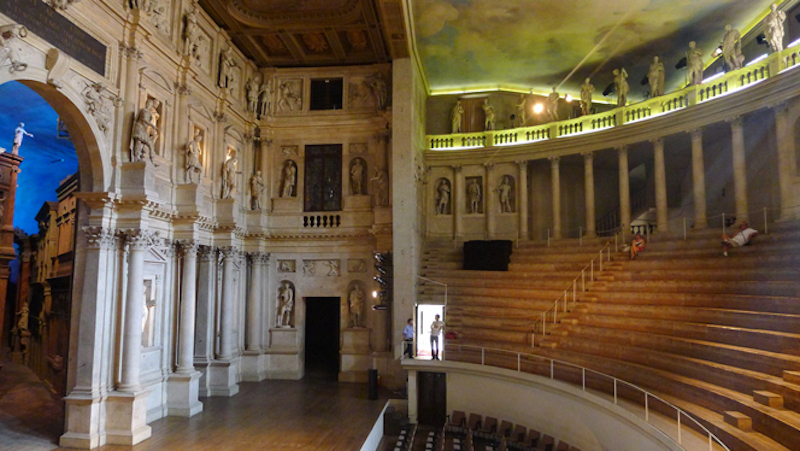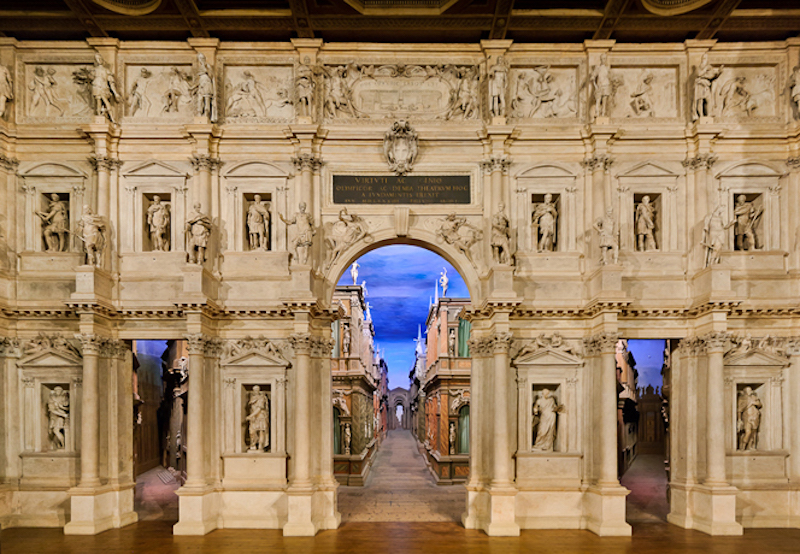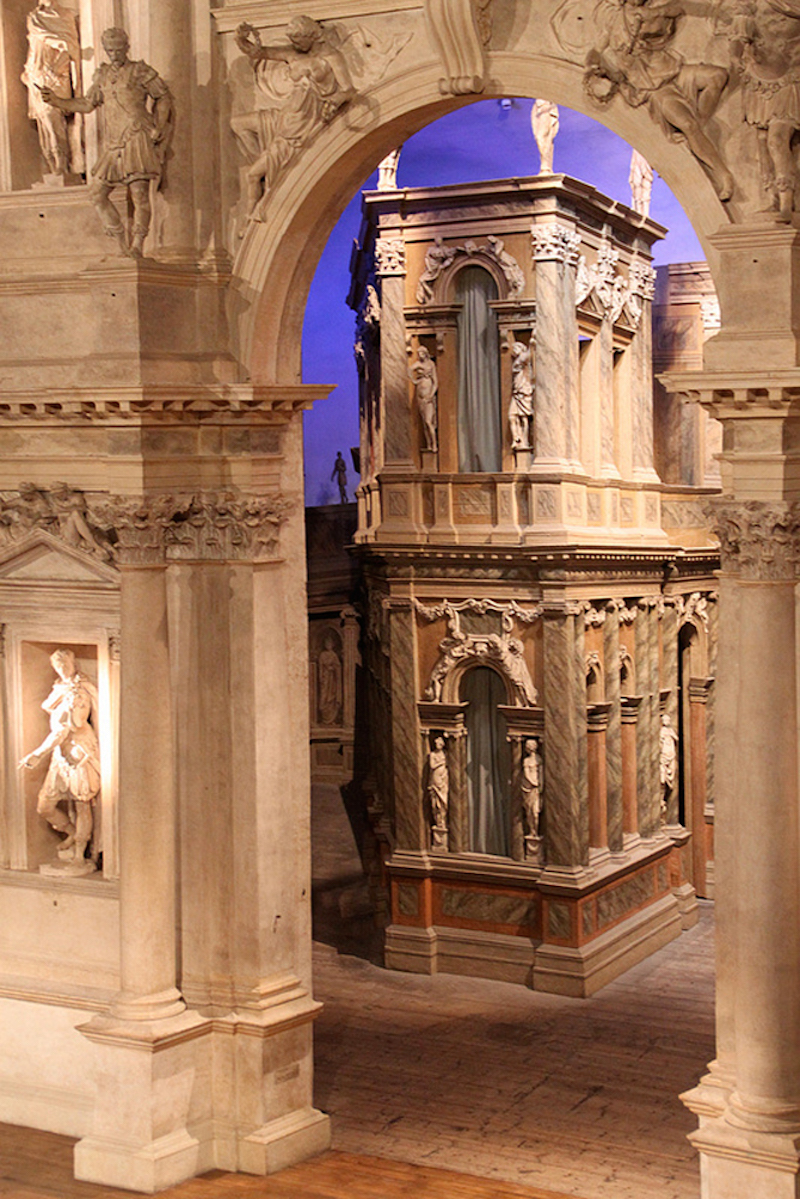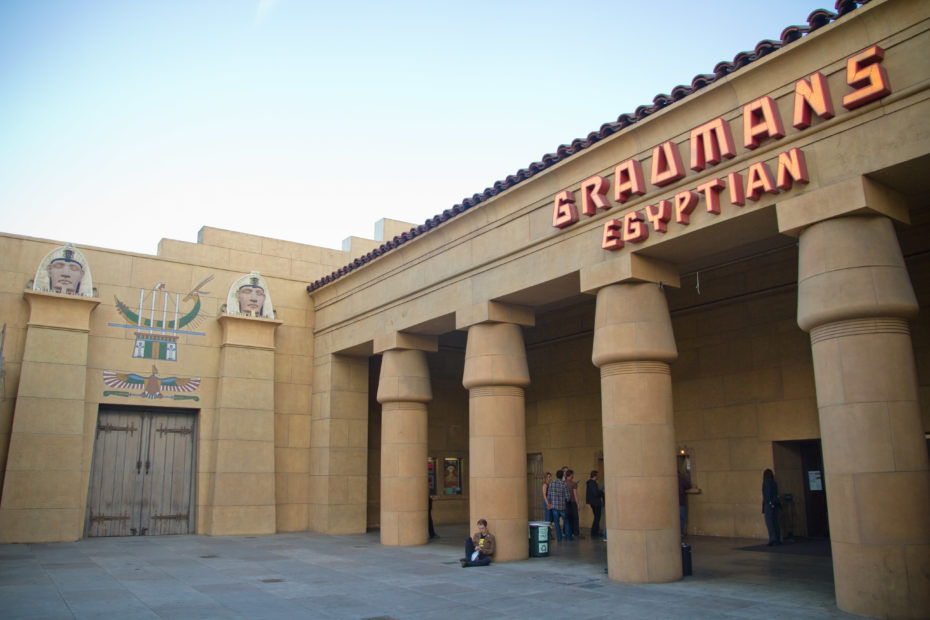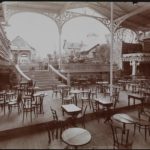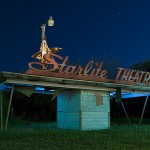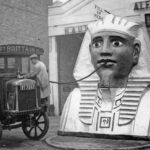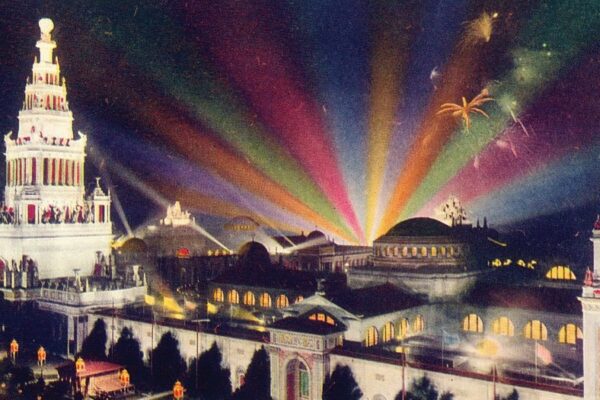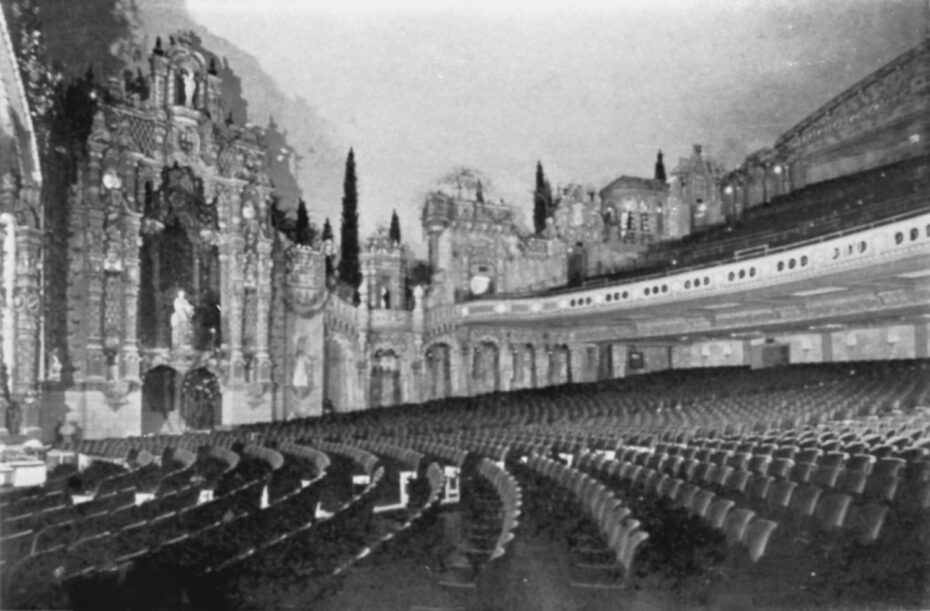
For some lucky theatregoers, a trip to see the latest B-Movie at their local picture house also means a trip across space and time. It’s all thanks to the atmospheric movie palaces and theatres of the early 20th century, whose construction brought veritable mini-cities, from old Spanish streets to lost temples of Ancient Egypt, into our movie houses…
Loew’s Valencia Theatre, Queens NY
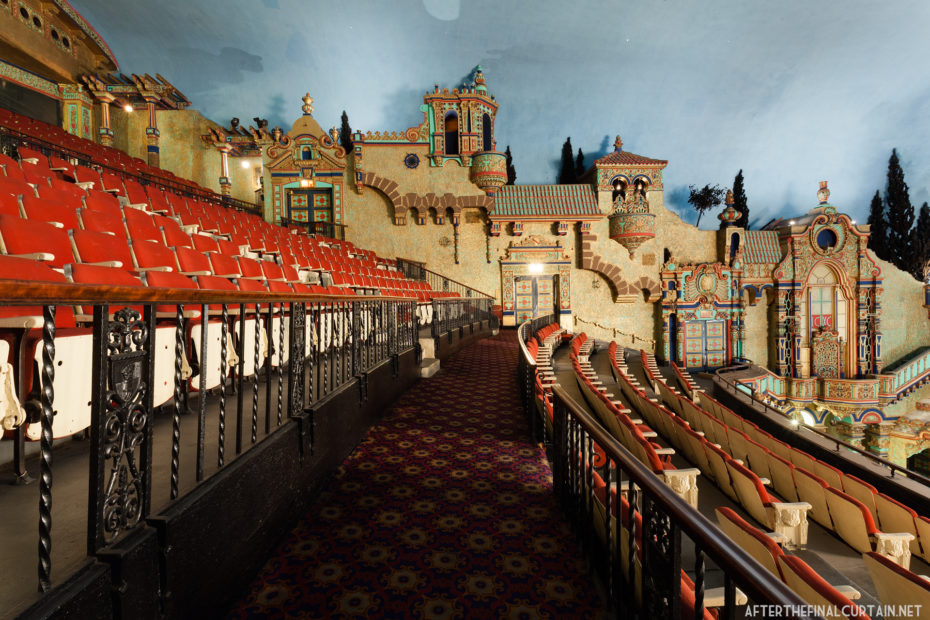
Built in 1929, this 20th century movie palace, one of NYC’s five flagship “Wonder” theatres opened by the Loew’s chain, has been serving as a church for The Tabernacle of Prayer for All People since 1977. Austrian architect John Eberson designed the theatre to give audiences the illusion that they were watching a film in a “magnificent amphitheater, an Italian garden, a Persian court, a Spanish patio, or a mystic Egyptian templeyard, all canopied by a soft moonlit sky.” Intricately adorned in Spanish Colonial and pre-Columbian styles, he was meticulous about ensuring the sidewalls of the auditorium didn’t match and break the illusion.
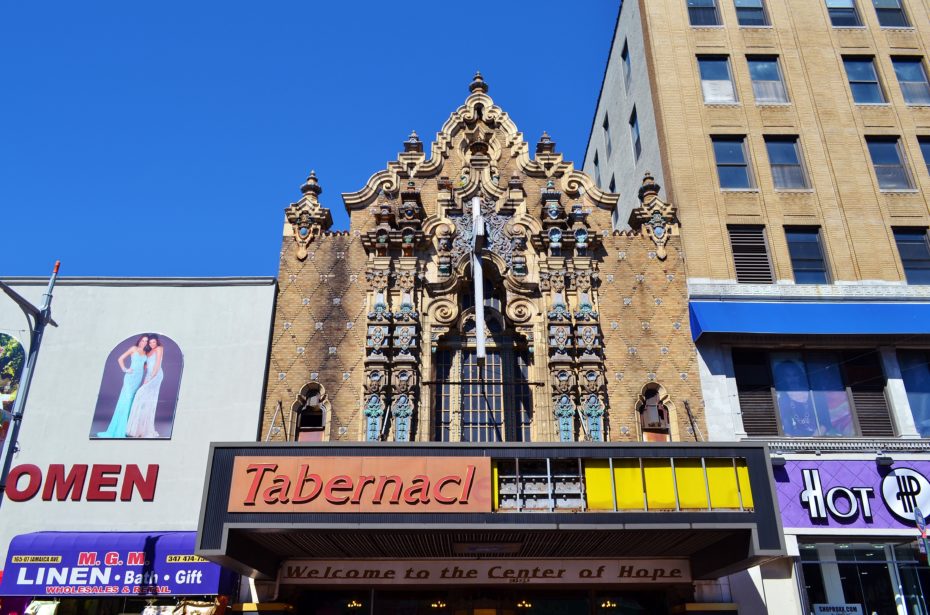
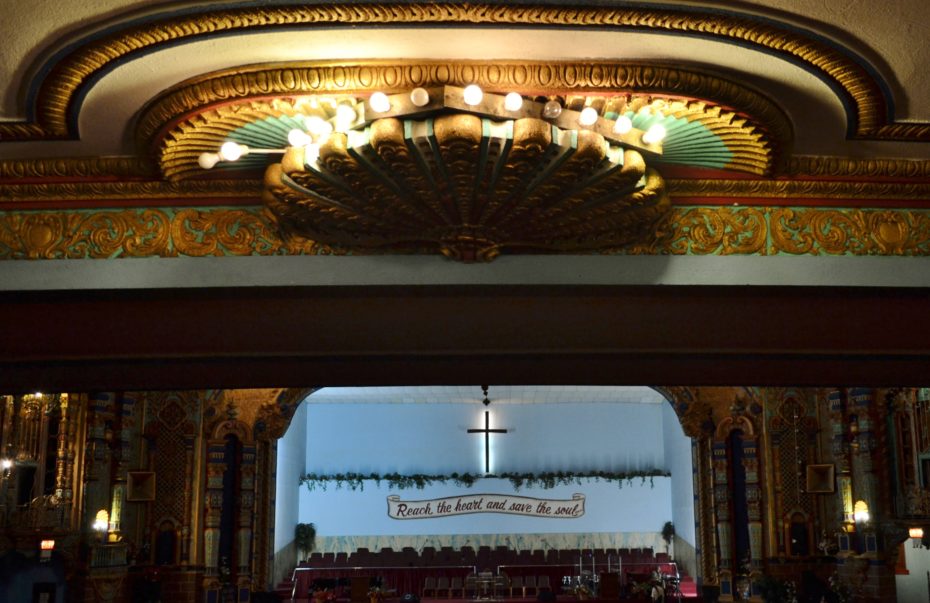
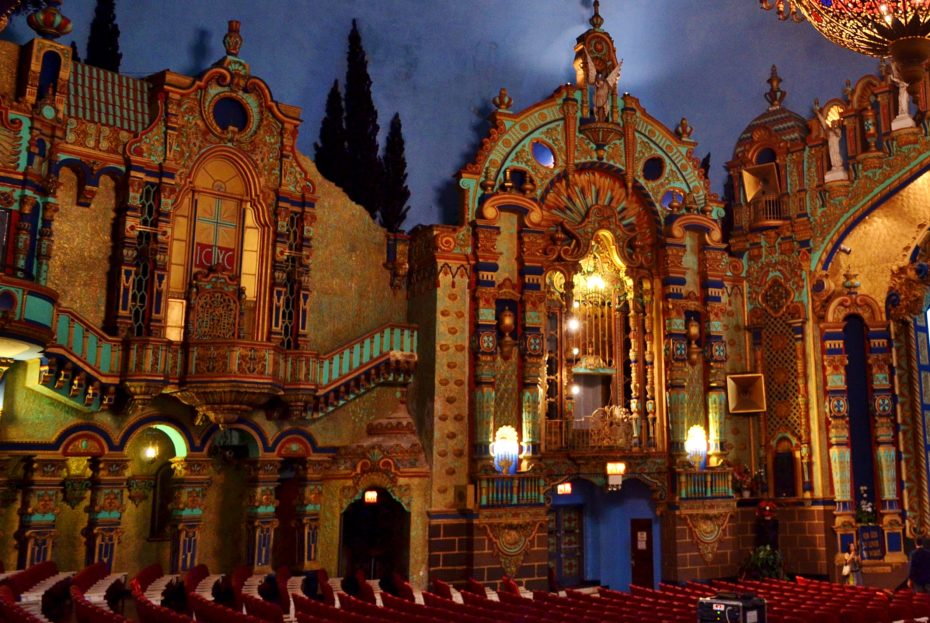
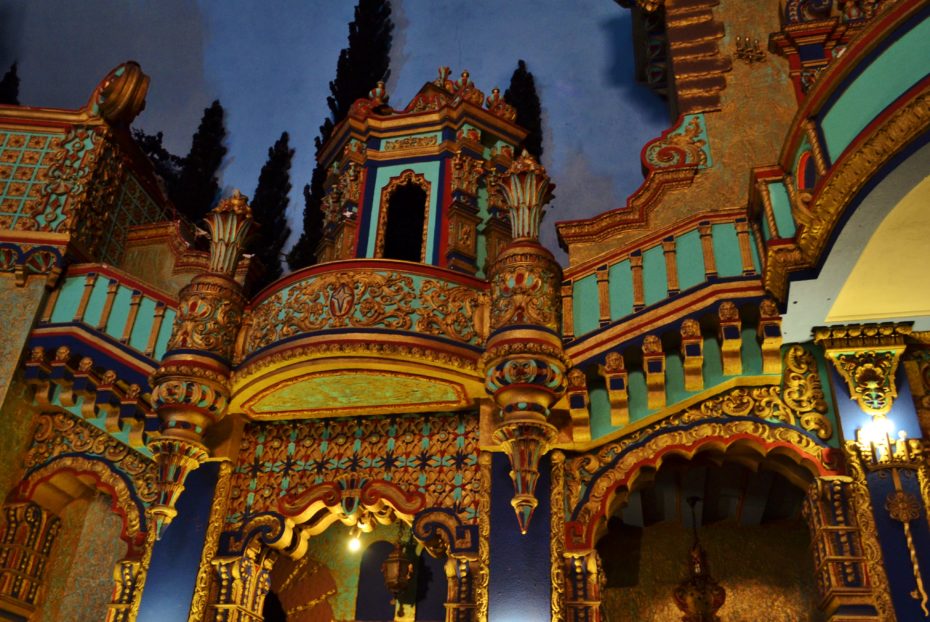
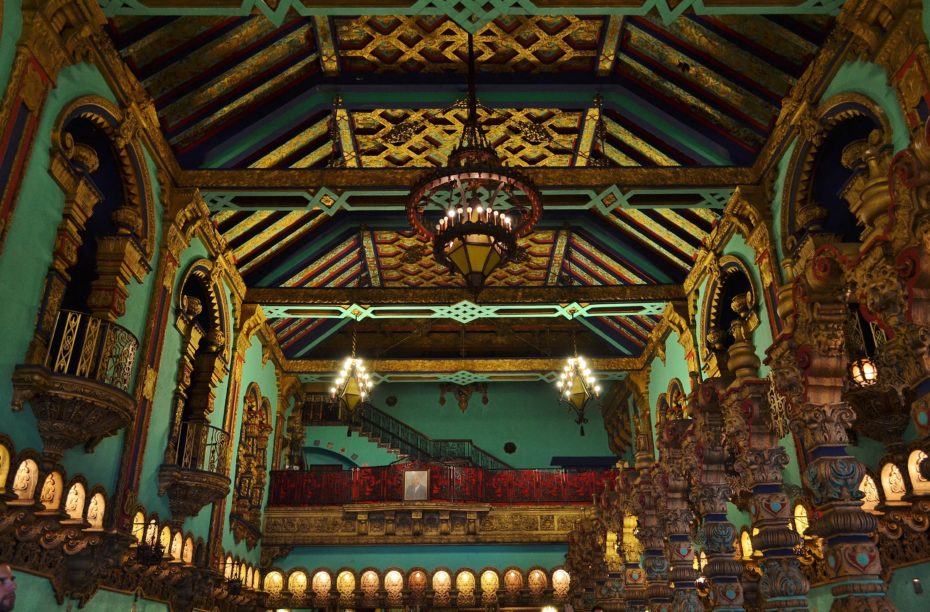
The Arlington Theatre, Santa Barbara, California
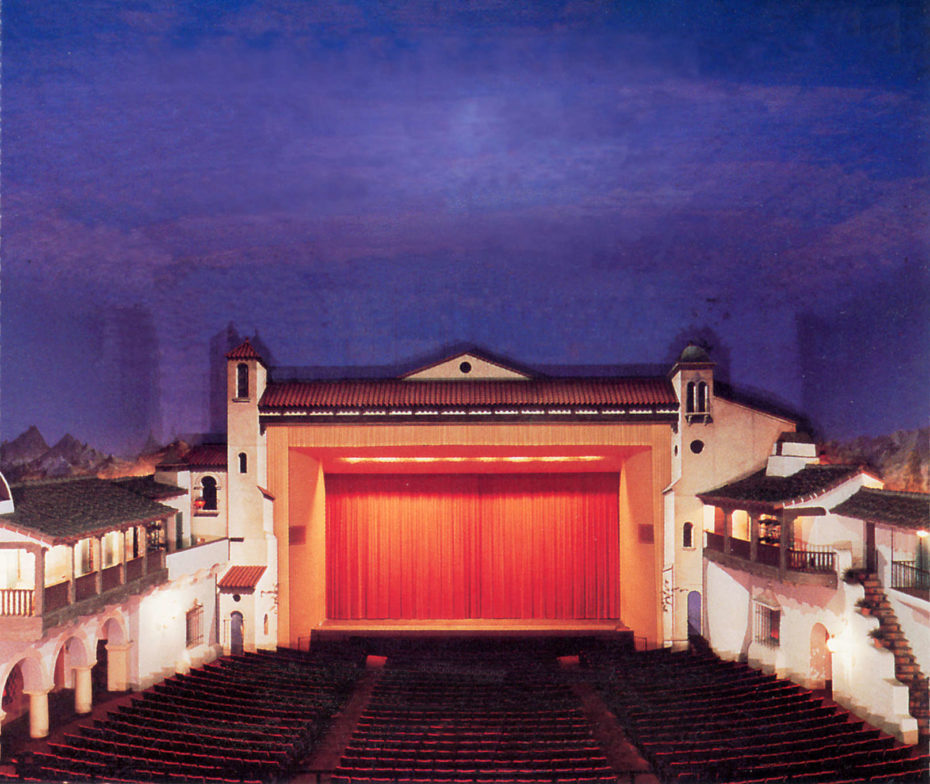
After a great earthquake in 1925, the city of Santa Barbara began rebuilding everything in Mission-revival style. Including their theatres. The Arlington, erected in 1931, was meant to make viewers feel like they were in a small Spanish town and there are even small “stars” that light up on the ceiling.
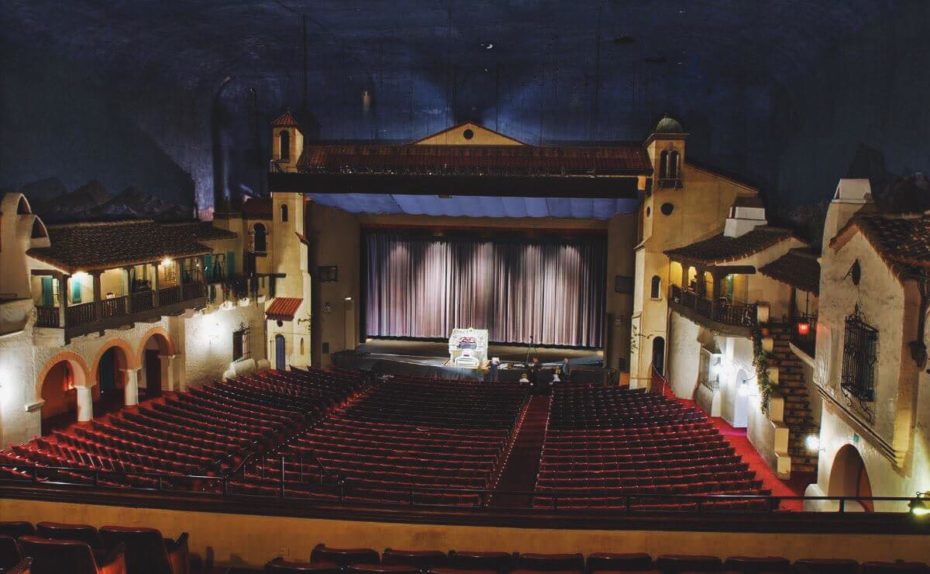
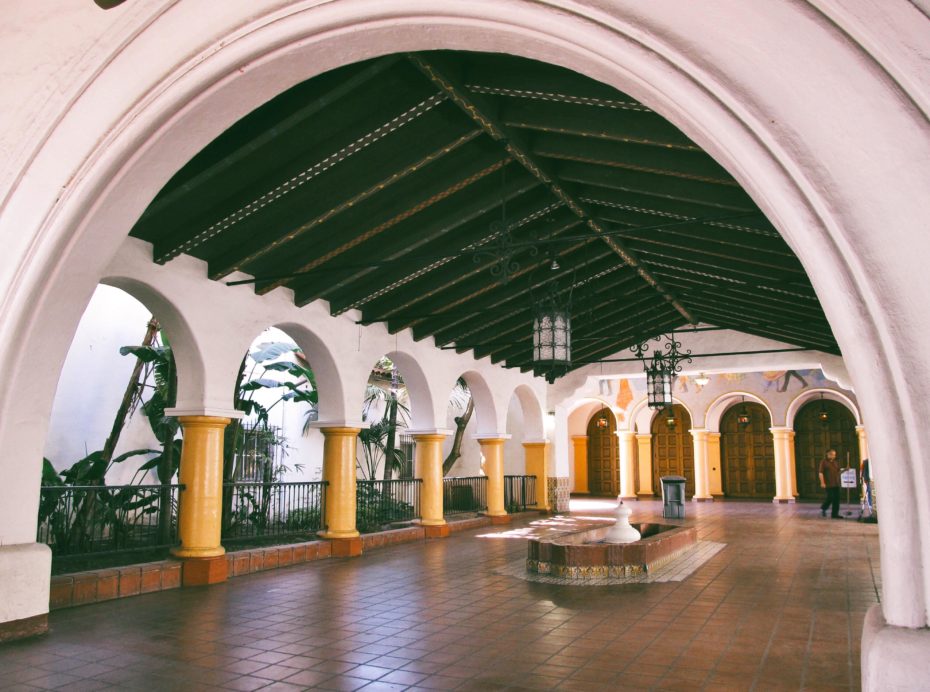
Avalon “New Regal” Theater, Chicago
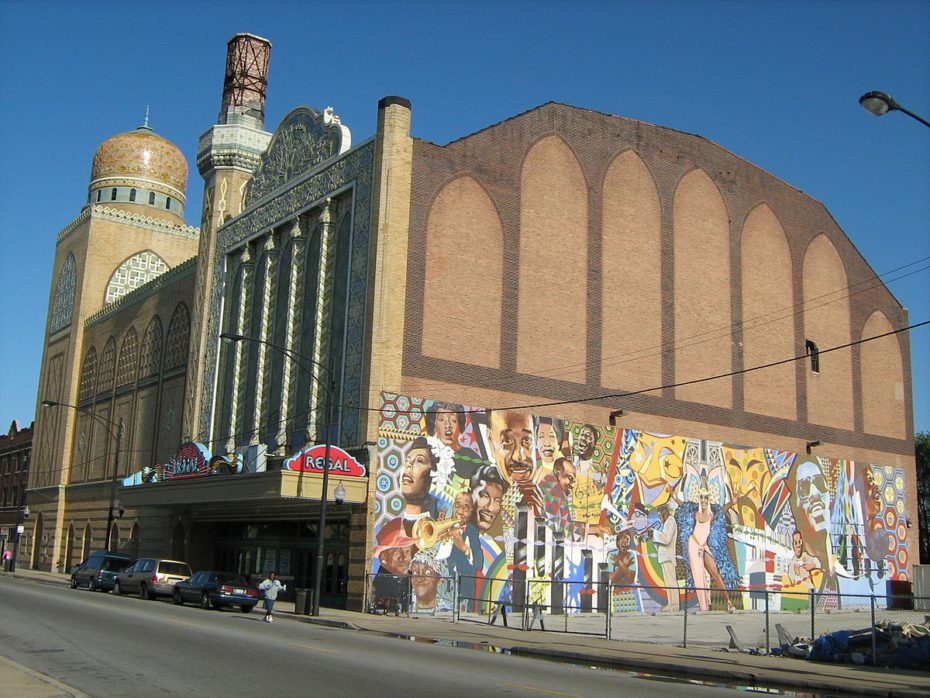
The space opened as the Avalon Theater in 1927, and while it may not look like much from the outside, the interior Moorish-revival architecture is truly a sight to behold…
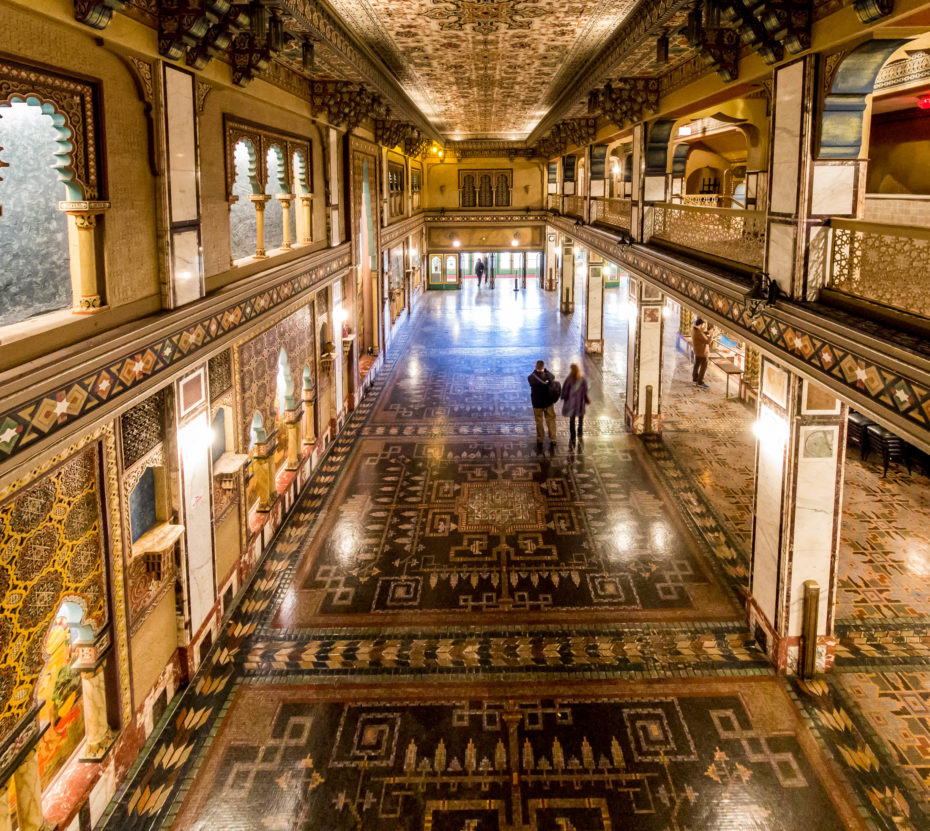
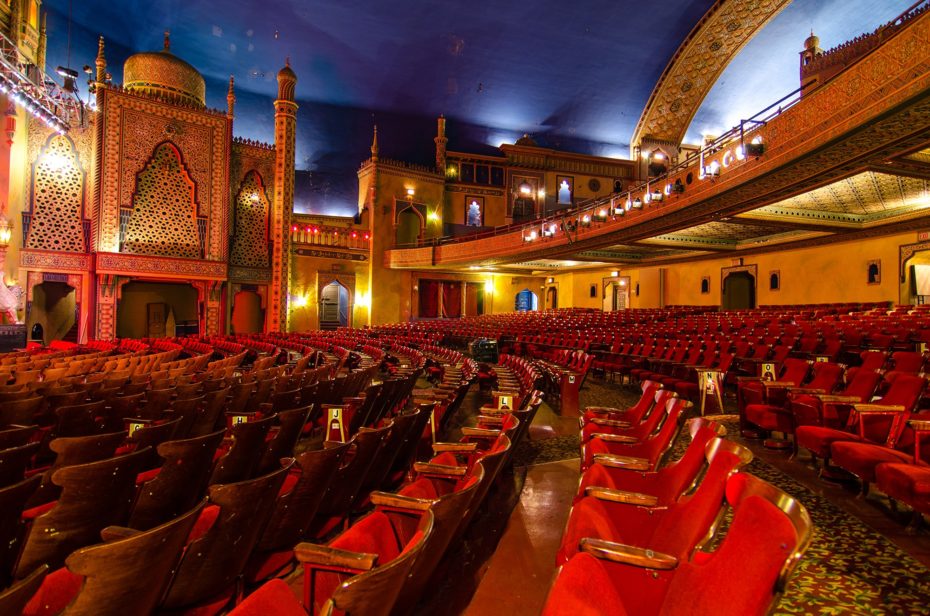
Billed as the “Showplace of the Eastern Shore,” upon its opening, in the 1960s, it became a hub for the growing African American community. Everyone from Louis Armstrong to Billie Holiday graced its stage. Its standing as the district’s premier movie house ended in 1985, suffering from mildew, cracks in the walls, stained carpeting and rickety seats, the Avalon closed its doors and remained dark until November 1987.
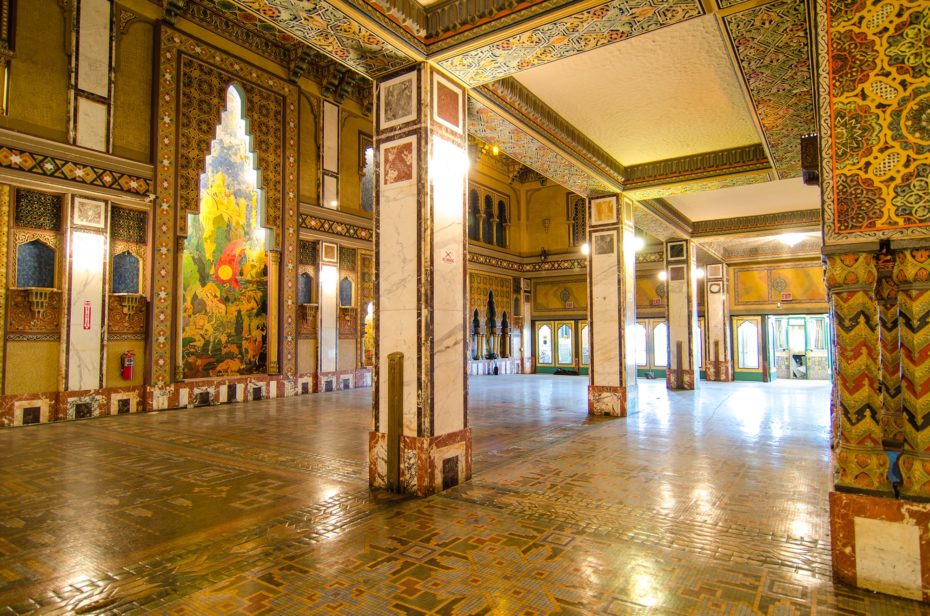
In 1989, the Avalon was re-opened after an impressive restoration and upgraded to a performing arts center, retaining its proscenium stage, domed ceiling.
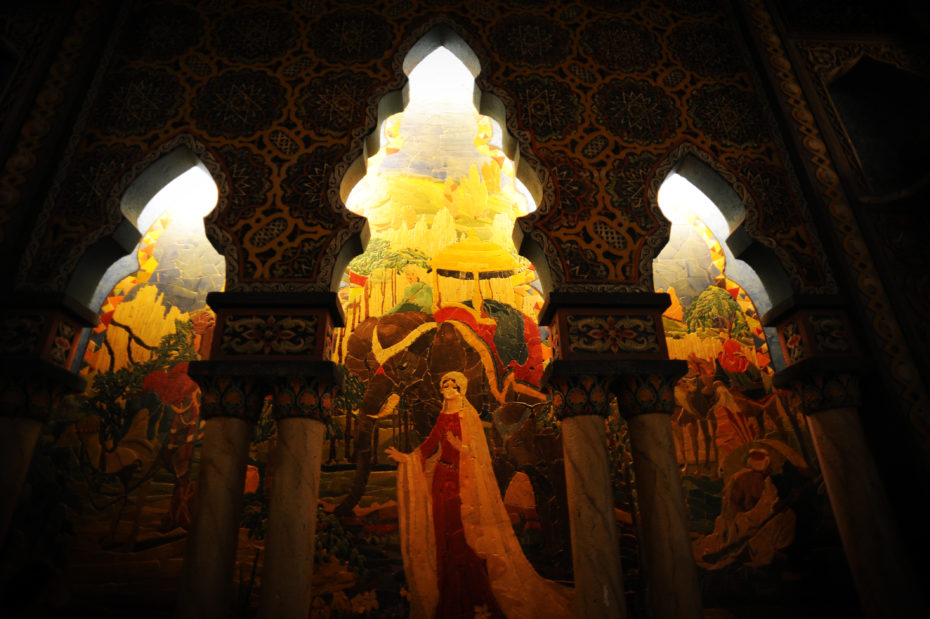
The Holland Theater, Bellefontaine, Ohio
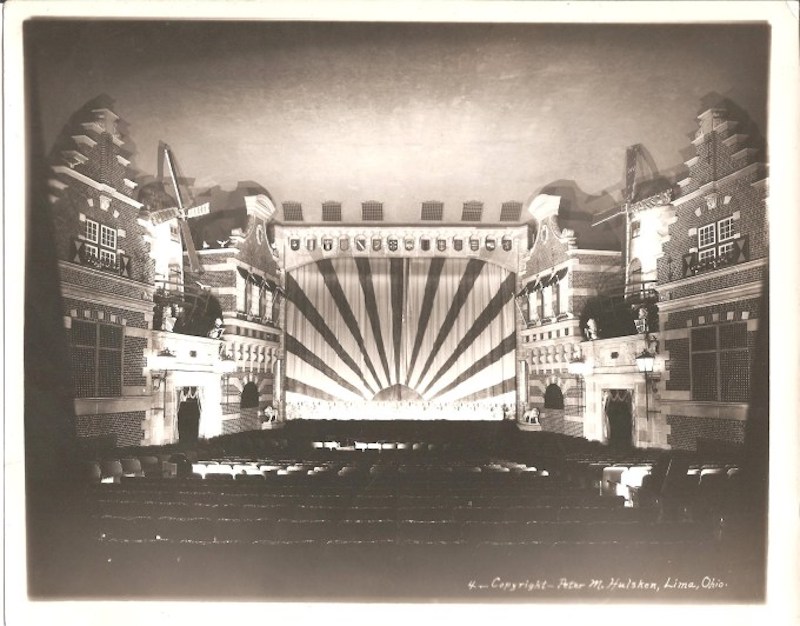
The “Holland” opened its faux, 17th-century Dutch doors to Midwesterners in 1931. The exterior and interiors remain festive to boot (although it’s unsure if the windmill still turns).
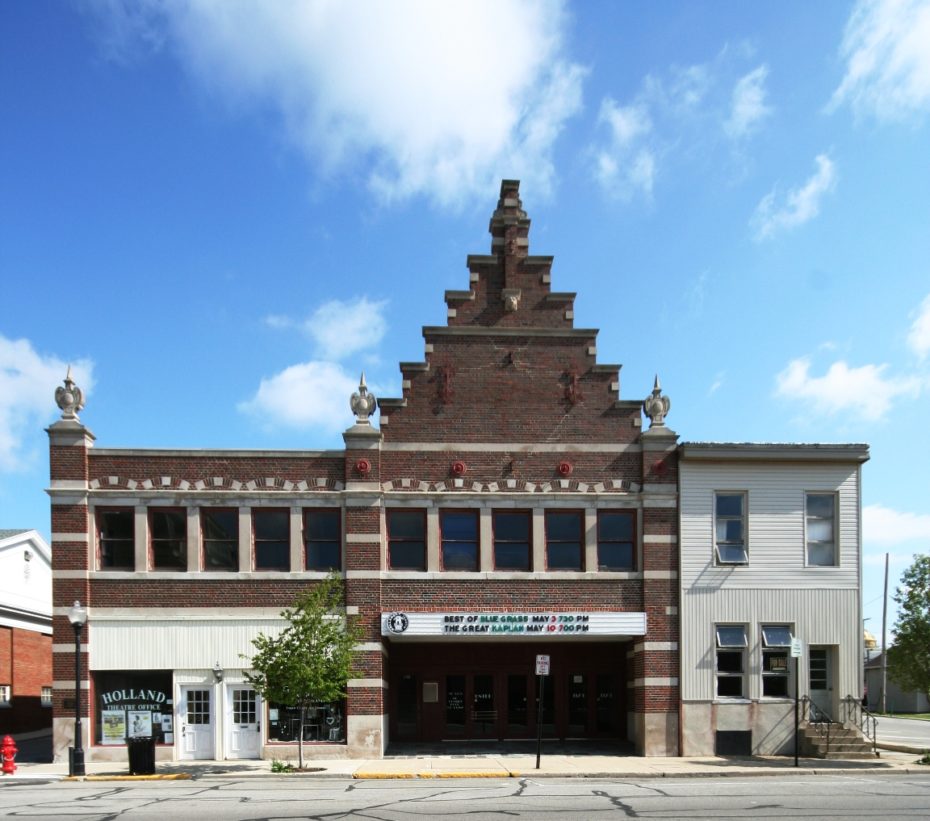
The original movie theatre was closed in 1998 after going out of business due to the newer, more technologically advanced cinemas that were introduced to the town. However, a preservation group is working to restore the space while the building remains open to host various fine arts events and local theatre troupes.
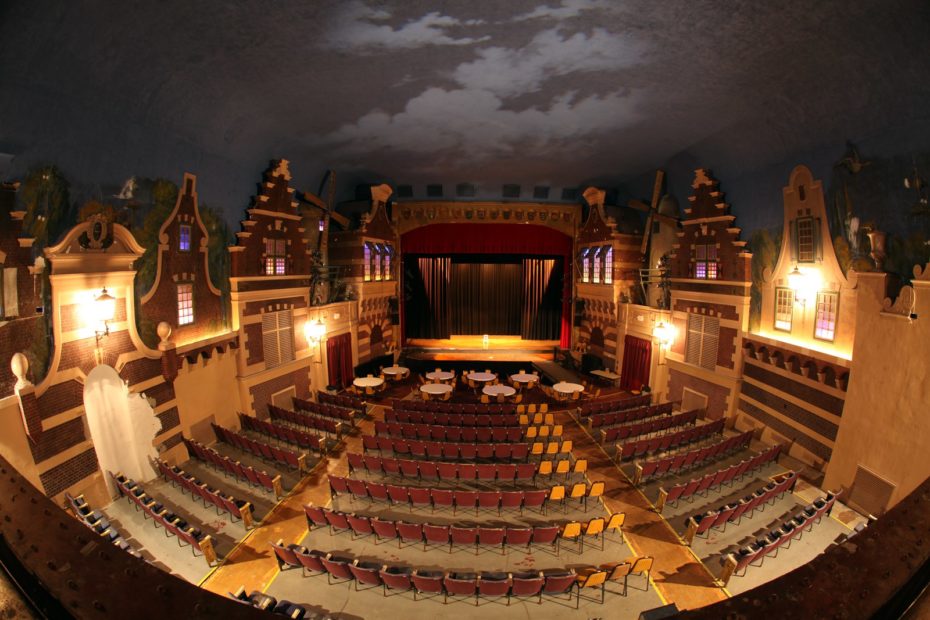
Elgin and Winter Garden Theatres, Toronto, Ontario
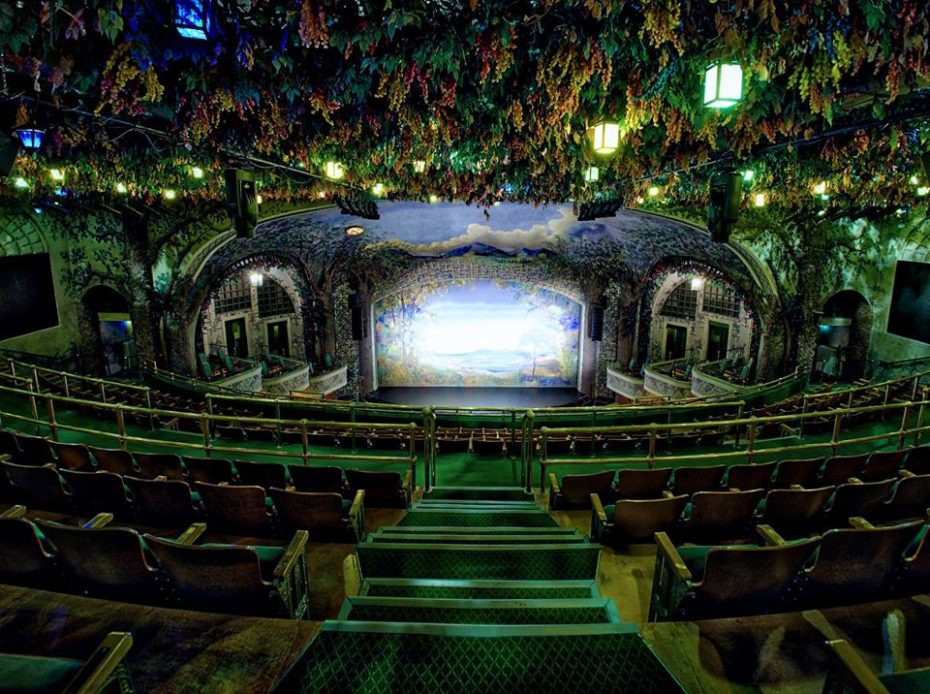
Ok so this one isn’t exactly hiding a city, but rather, a magical forest…
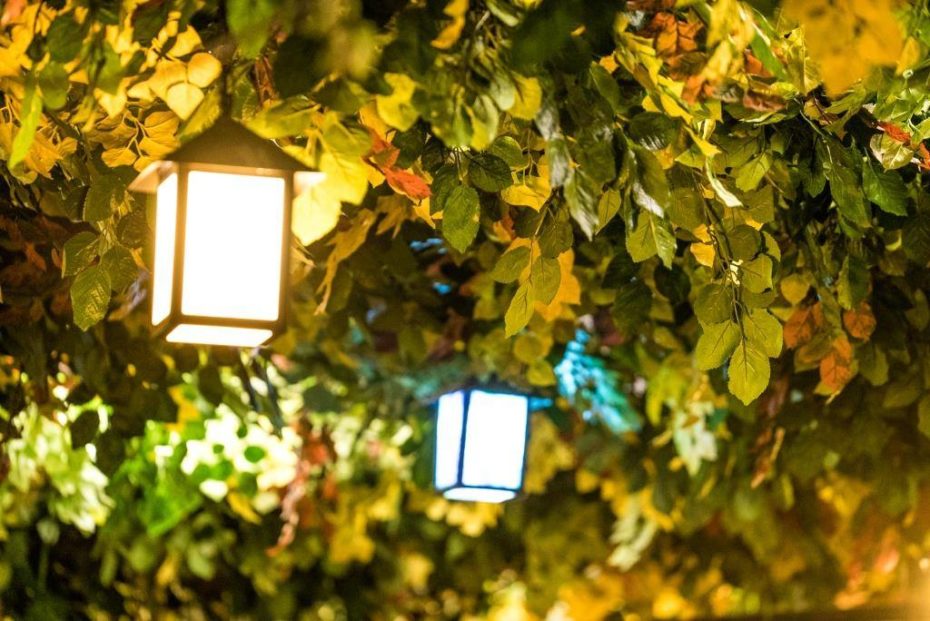
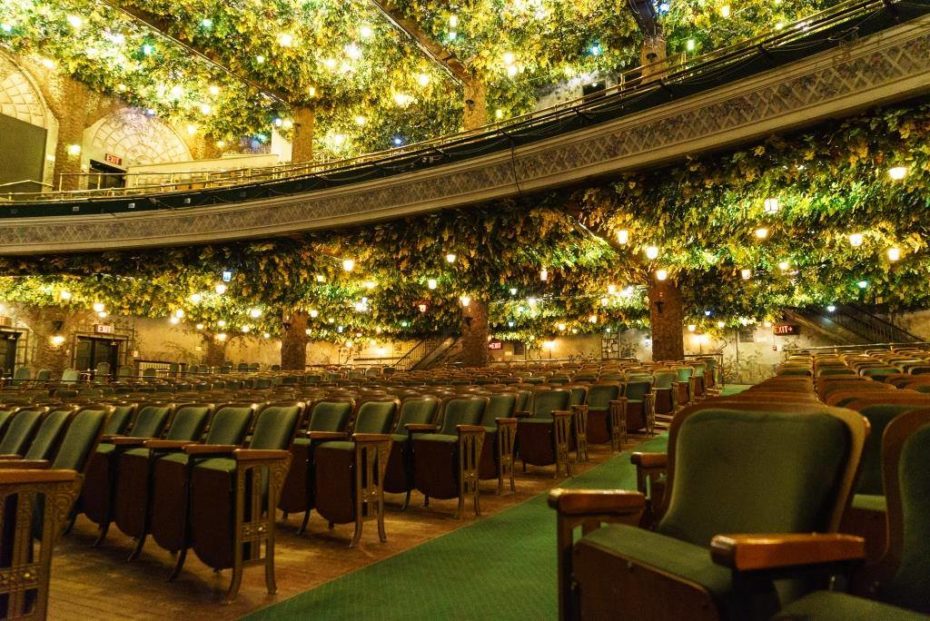
Built in 1913, this the last remaining Edwardian “stacked theatre” in the world. The Winter Garden Theatre sits seven storeys above the ground floor theatre, the Elgin. The garden theatre comes complete with a canopy of dried flowers and trellises. Both theatres were built to show vaudeville acts and the short silent movies of the time, each intended to compete in a different market.
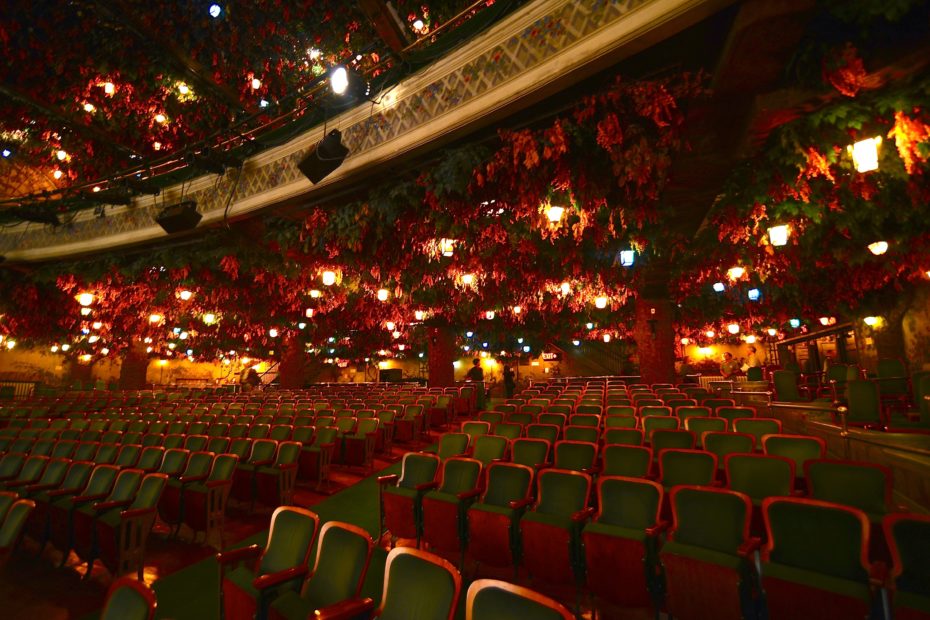
When sound films came into popularity in the late 20s, the lower theatre was converted to show sound films and the Winter Garden theatre was closed and shuttered for about sixty years. By the 1970s, the Elgin was showing mainly B movies and soft-core pornography.
During the restoration in the 1980s, treasure was discovered inside the winter garden. Hiding in the dark during all those years of closure was the world’s largest surviving collection of vaudeville scenery – hand-painted cloth flats and drops dating from 1913 to 1918. Several of restored pieces, including the magnificent Butterfly Scenery and Scarab flats, can now be found displayed at the Theatre Centre.
Majestic Theatre, San Antonio
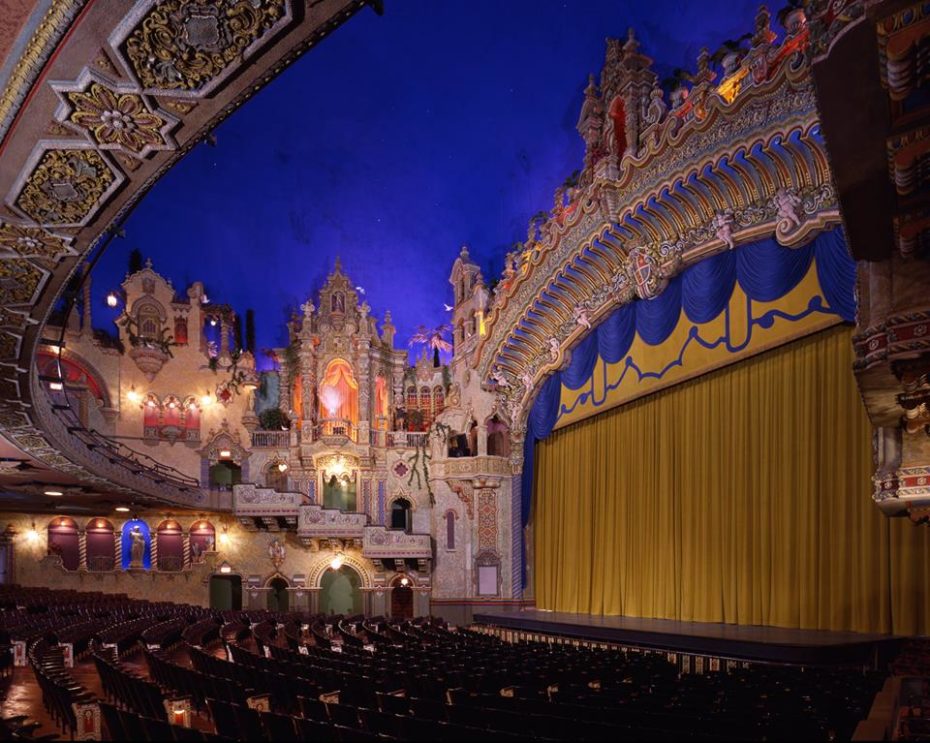
The Majestic gives even Liberace a run for his money. Completed in 1929, its decor is a Baroque cocktail of worldly influences. There used to be “a 76-foot tall sign topped with “a strutting peacock…walking as a huge ball rotated under his feet,” and a grotto-esque level with exotic fish.
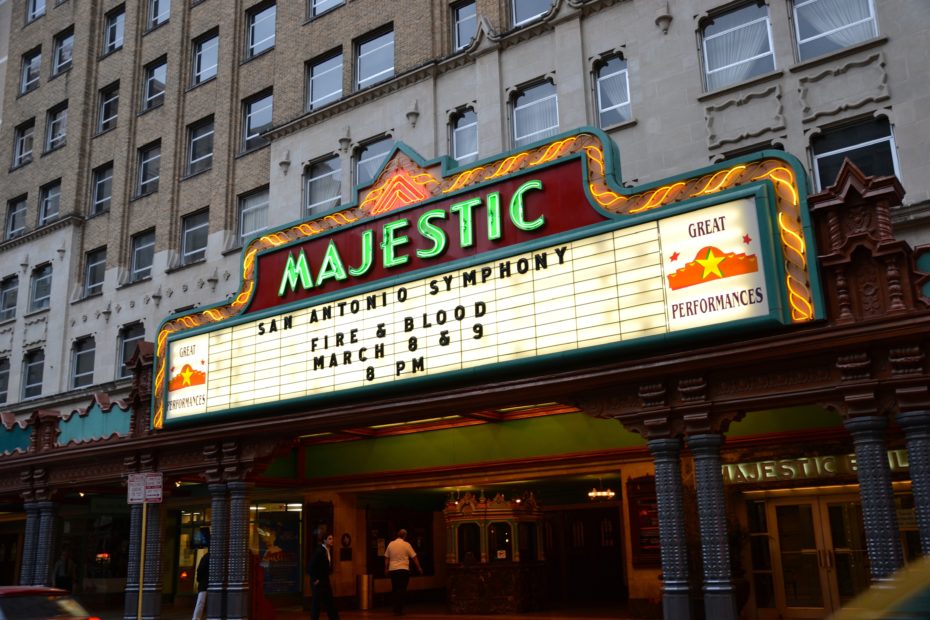
Inside the theatre’s auditorium, while still and sight to see, there were once stuffed birds perched on the balconies or frozen mid-flight via ceiling wire. They even brought in specially treated cypress trees brought from Spain and placed them on upper-levels of the mini-city.
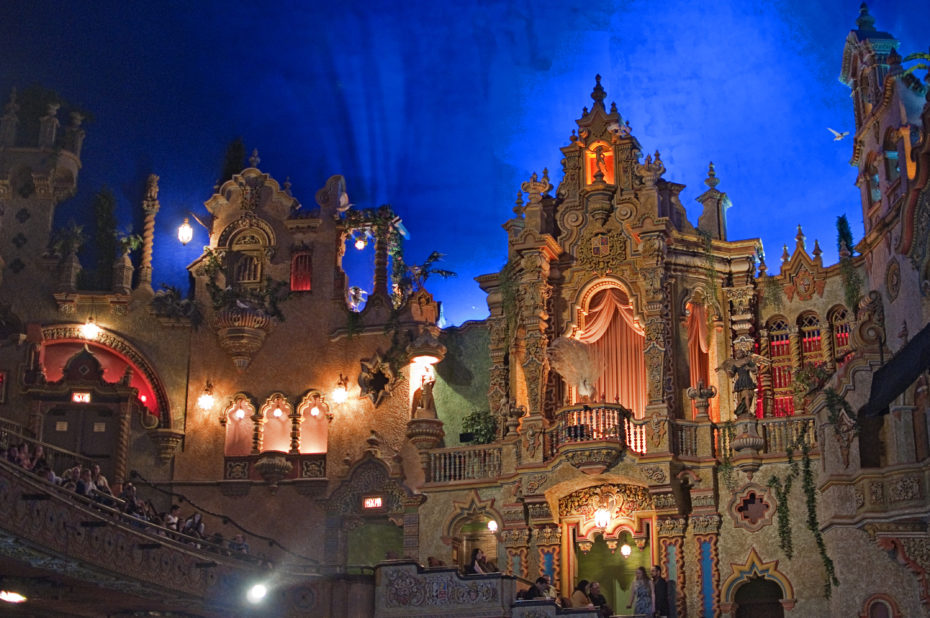
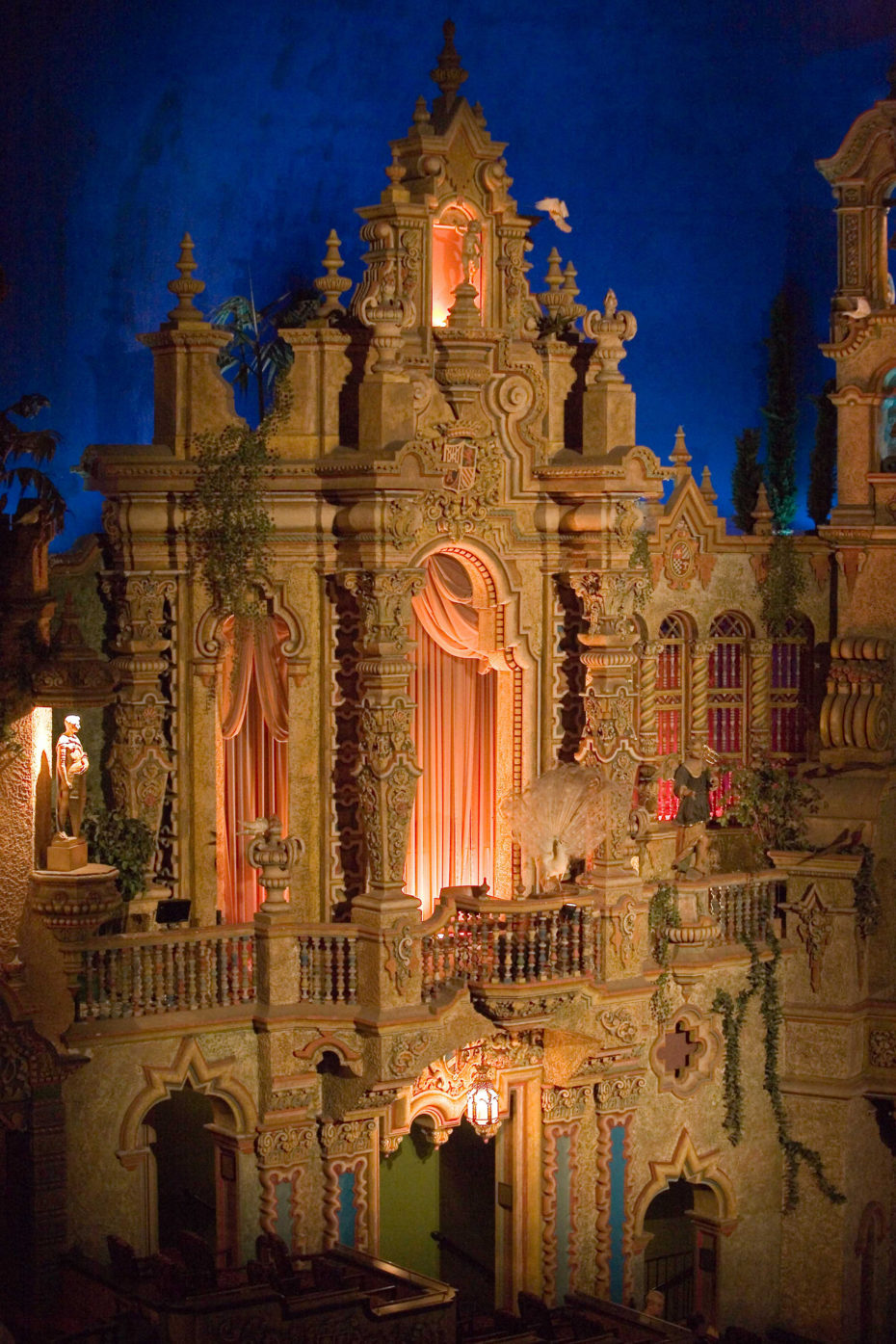
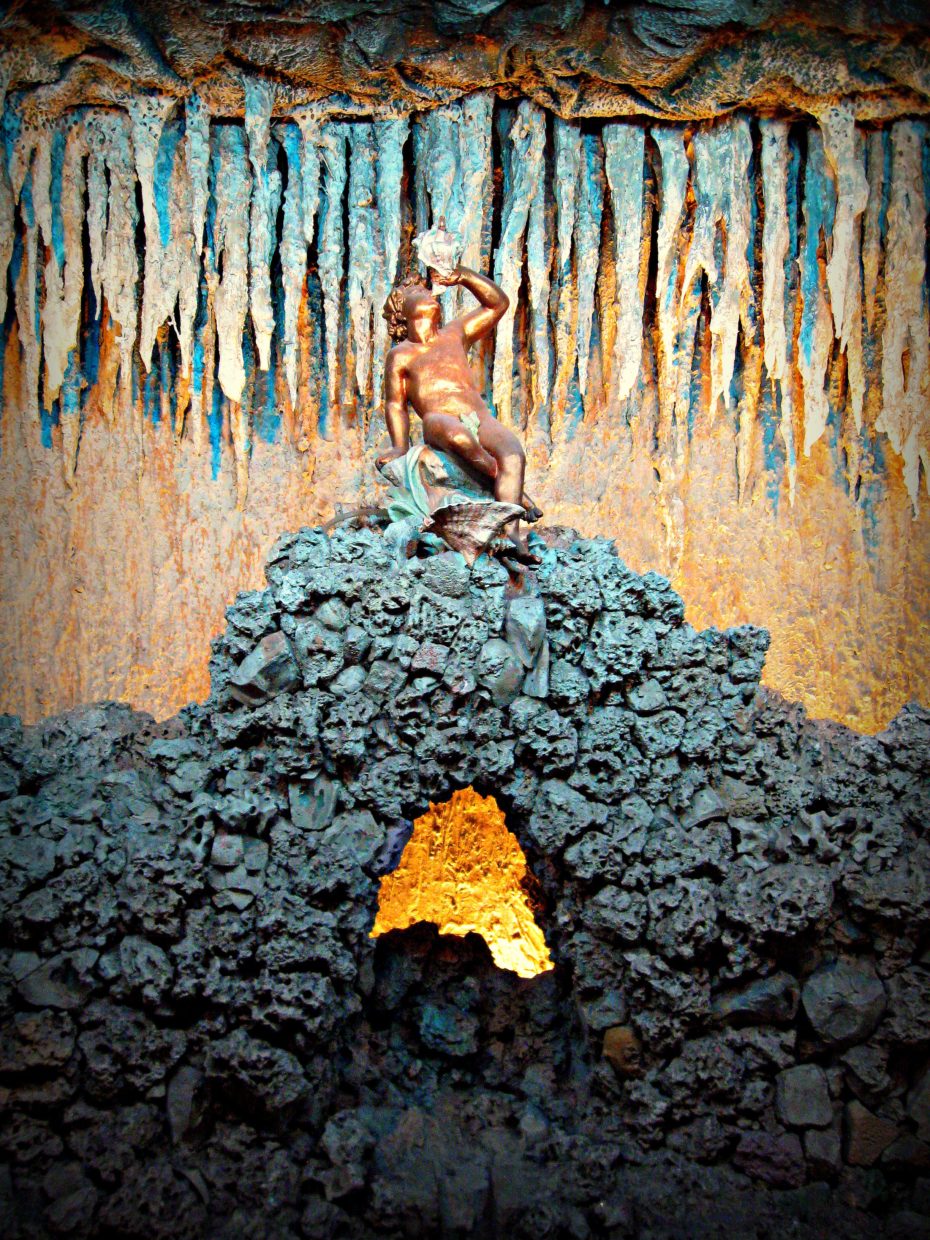
Grauman’s Egyptian Theatre, Hollywood
Sure, everyone knows Grauman’s Chinese. But the Egyptian theater was its predecessor, and the site of the first ever Hollywood film premier, Robin Hood, in 1922. The theatre’s architecture was initially slated for a Spanish-revival vibe (some traits of those intentions are still visible) but shifted over to an Egyptian look when the 1922 discovery of Tutankhamun’s tomb fascinated the nation.
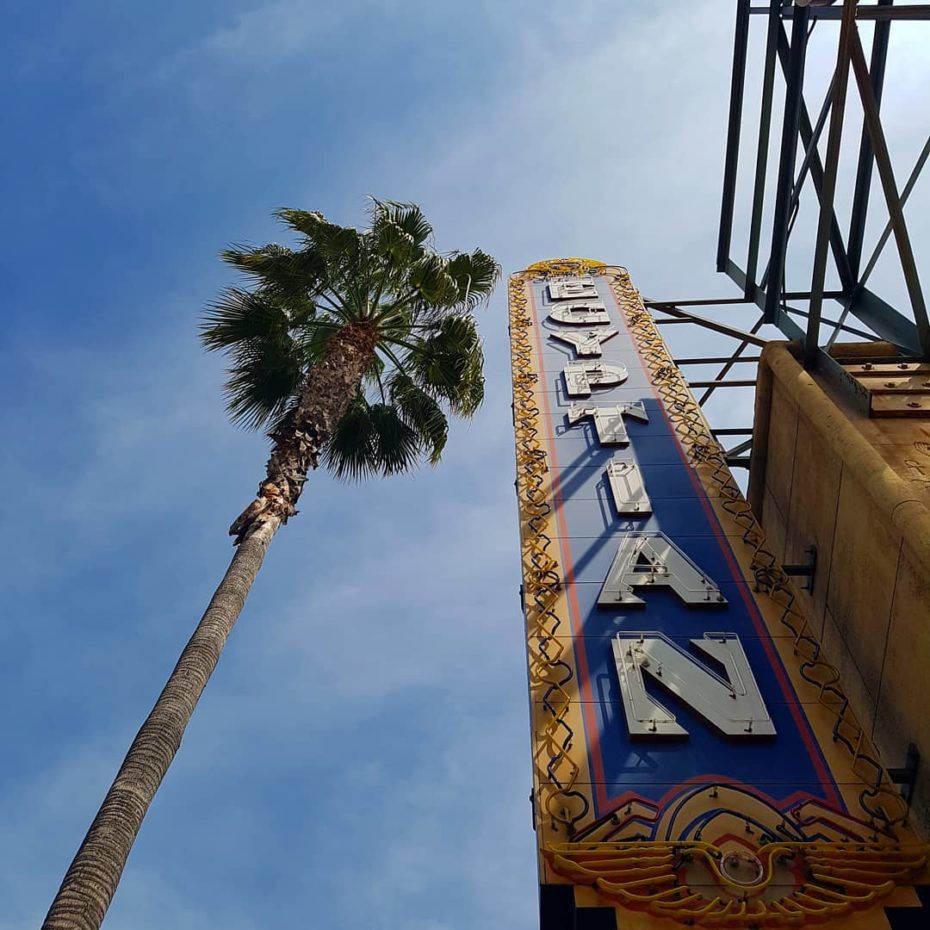
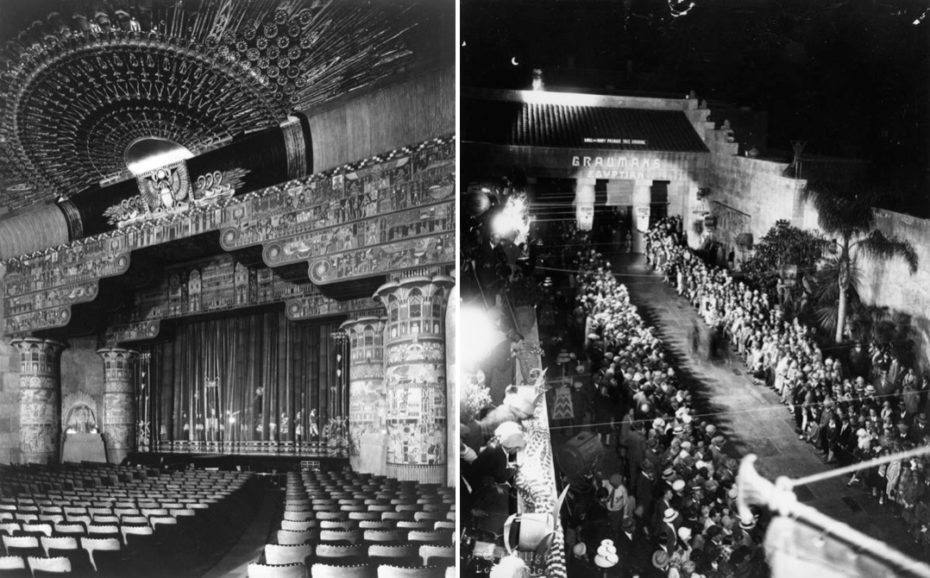
As Hollywood declined in the 1980s and early 1990s, the theatre eventually fell into disrepair and in 1996, the city of Los Angeles sold the theatre to the American Cinematheque for a nominal one dollar under the agreement that funds be raised to restore it.

The Egyptian Theatre was re-opened to the public after a $12 million renovation. Sadly the theatre is much less opulent today on the inside, but its exterior remains nearly the same…
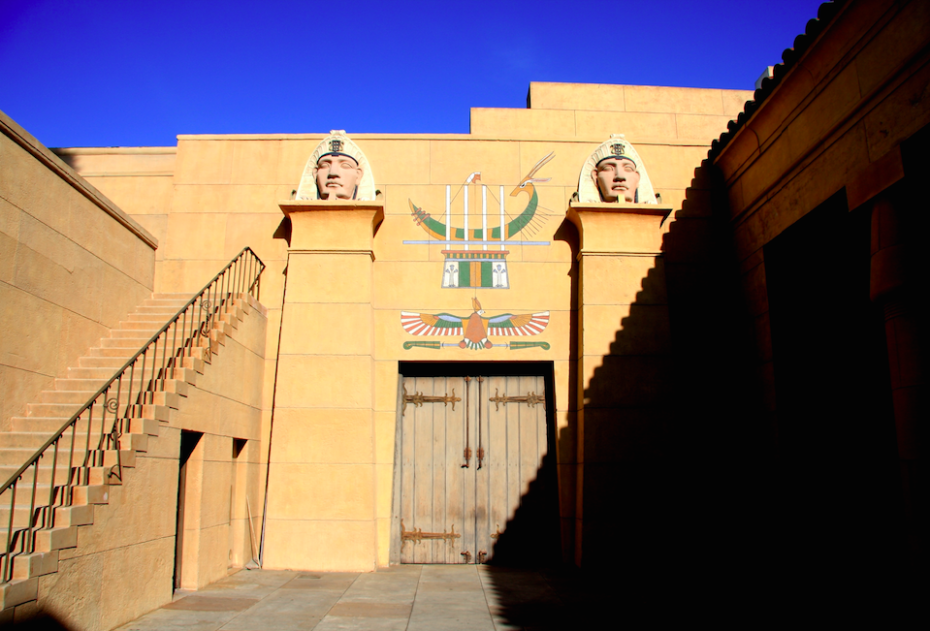
The Olympic Theatre in Vicenza, Italy
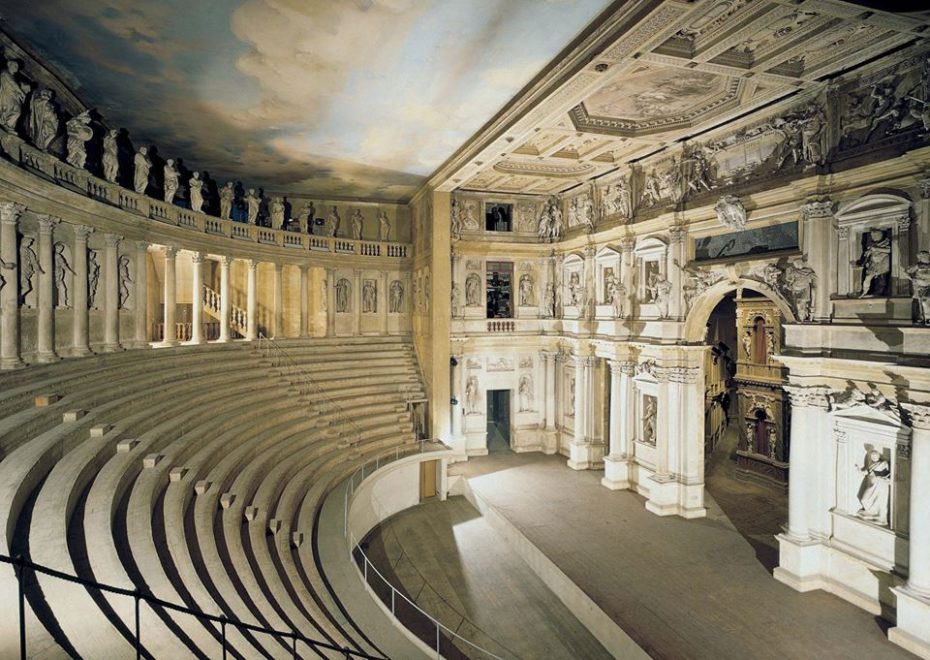
We skip over to Italy for our final theatre, a most special and historic venue, which opened its doors during the Carnival of 1585. The first performance staged in the building was Sophocles’ “Oedipus the King” and the wooden superstructures erected for that magnificent opening were never removed. They depict the seven streets of Thebes, which can be seen in perspective in the five openings in the proscenium.
